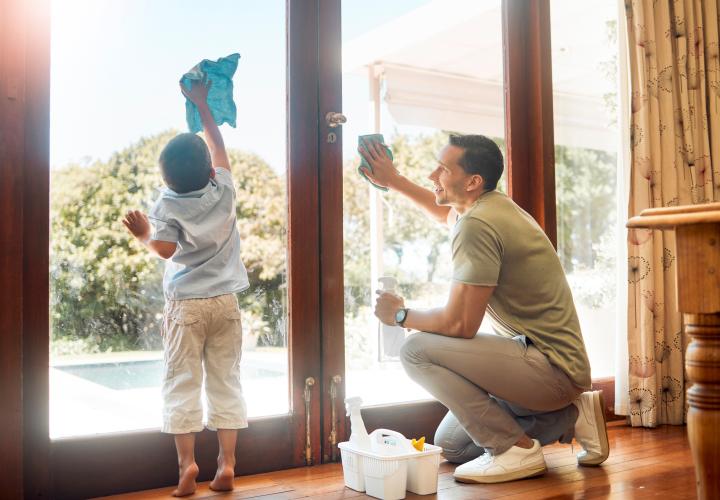Spring cleaning isn’t just about getting your house in order—it’s about protecting your family’s health. As the weather warms up and we throw open the windows, it’s the perfect time to tackle the dust, clutter, and grime that have built up over the winter. But there’s more to cleaning than meets the eye. A clean home can improve air quality, reduce allergy symptoms, and even support your mental well-being. However, special care needs to be taken in order to avoid contaminants that could negatively impact the health of you and your family.
That’s why spring cleaning can also be a valuable opportunity to uncover potential health hazards in your home, hazards that Healthy Homes, a program of the Office for Community Child Health, may be able to help address. Whether it’s signs of mold, peeling lead-based paint, or recurring allergy symptoms, identifying these issues now can lead to a safer, healthier home environment in the long run.
Hidden Health Hazards in the Home
Many people don’t realize that everyday household dust and grime can contain hidden health risks. Dust often includes pet dander, pollen, and even chemicals from cleaning supplies and furniture. Mold can grow in damp areas like bathrooms and basements, releasing spores that trigger asthma and allergic reactions. Even more concerning, older homes may contain lead-based paint, which can chip and turn into dangerous dust, especially for children. Exposure to lead can affect a child’s development, behavior, and ability to learn.
When we clean without considering these hidden hazards, we may accidentally stir them up instead of getting rid of them. That’s why it’s important to understand not just what we clean, but how we clean—especially in older homes where disturbing lead-based paint can release harmful dust. Following safe cleaning practices for lead dust prevention is essential if your home was built before 1978.
Mold is another potentially serious home health hazard that should be handled with care during spring cleaning. For small, manageable areas, you can follow recommended guidelines for cleaning mold safely and effectively. However, if you discover extensive mold or recurring moisture problems, it may be necessary to bring in a certified professional for mold remediation.
Health Benefits of Spring Cleaning
Thoughtful spring cleaning can make a real difference for your health. Removing dust, allergens, and mold helps prevent respiratory issues like asthma and sinus problems, while also improving indoor air quality. A clean, organized space can reduce stress, support better sleep, and create a fresher and healthier home when you use non-toxic products, ventilate well, and keep moisture in check.
When to Call in the Experts: Healthy Homes Can Help
While basic cleaning goes a long way, some environmental hazards require more than just elbow grease. That’s where the Healthy Homes Program comes in. Our program is designed to help families address serious health threats in their homes, like lead paint, mold infestations, and unsafe construction materials.
We understand that families can handle the everyday cleaning. But if you’re worried about deeper problems such as peeling paint in an older home, visible mold that keeps coming back, or allergy symptoms that don’t improve after cleaning, it may be time to reach out for support. Our team can help identify these risks and connect you with services to fix them.
Make Your Home Healthier…Starting Now
Spring cleaning is a powerful first step toward a healthier home. By taking the time to clean carefully and safely, you protect your family from dust, allergens, and other home health hazards. But don’t stop there. If you suspect more serious problems like lead or mold, reach out to the Healthy Homes Program. We’re here to make sure every family has a safe, healthy place to call home.
